
From cartoons to billboard advertisements, the prototypical Viking is portrayed as muscular, red-bearded with a long mustache, and always wearing a steel helmet adorned with cow horns. Admit it, when you imagine a Viking, that’s what immediately pops up in your head.
I hate to break it to you, but we’ve all been living a lie. There is no archaeological evidence to support the fact that Vikings ever sported any headgear other than simple iron helmets or leather caps. But if that’s the case, where did this enduring stereotype emerge from? Well, you have some Scandinavian set designers and one of Wagner’s most iconic operas to blame.
A myth that will live on as long as a timeless opera
It was the year 1876 and all of Germany’s most powerful and fashionable society flooded the quaint, small town of Bayreuth to witness the premiere of Richard Wagner’s highly anticipated new opera, a Norse drama called Der Ring des Nibelungen (The Ring of the Nibelung) that fused elements of German and Scandinavian myths and folklore.
The term ‘epic’ barely captures the weight and intensity of this truly monumental work. A full performance totaled almost 15 hours, usually spaced over the course of four nights at the opera, where each night is dedicated to a musical drama. The operas are Das Rheingold (“The Rhine Gold”), Die Walküre (“The Valkyrie”), Siegfried, and Götterdämmerung (“The Twilight of the Gods”).
The story itself is a sort of Norse Lord of the Rings, following the struggles of multiple gods, heroes, and mythical creatures over a magical ring that grants its wearer domination over the entire world. The cycle of the four operas unfolds over the course of three generations of protagonists, with the story ending with Götterdämmerung.
The Ring of the Nibelung was meant to be a huge show from the very beginning, and everything was prepared at the highest standard, including the set design. So the production team hired famed costume designer Carl Emil Doepler, who made some incredible garments and props for the operas, including winged and, you’ve guessed it, horned helmets. Doepler’s original concept drawings for the Viking costumes are truly exceptional.
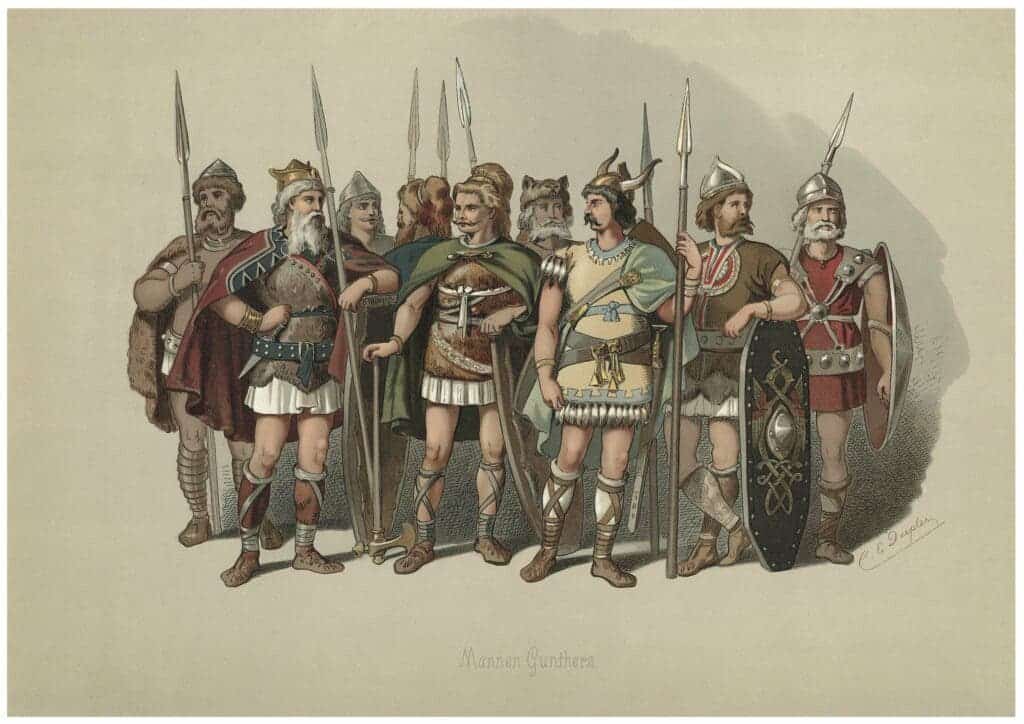
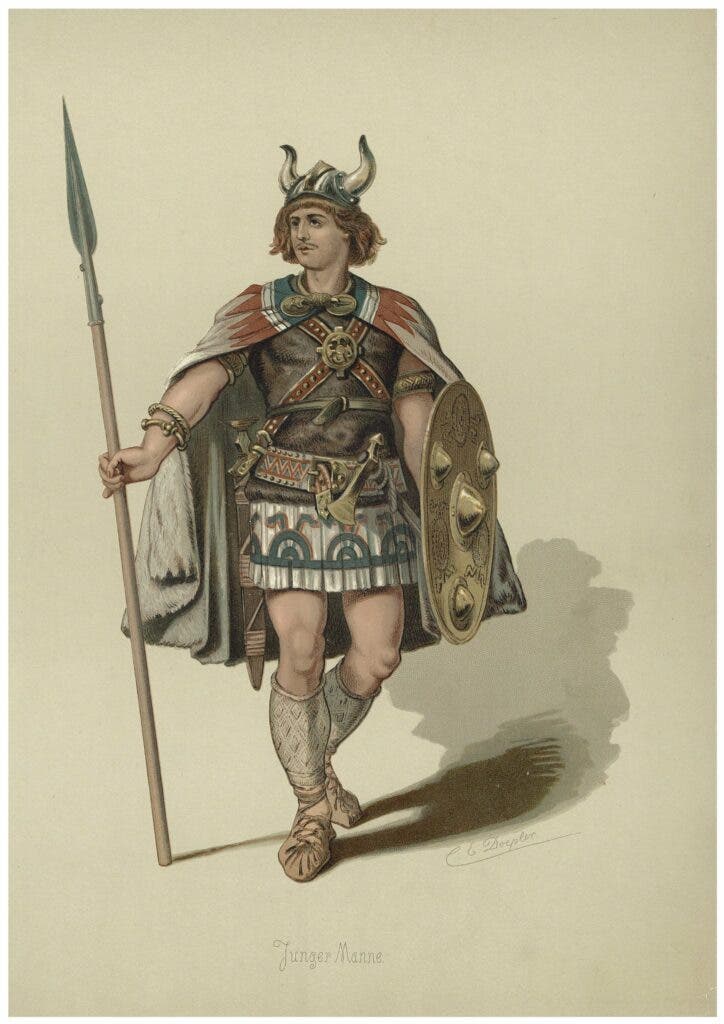
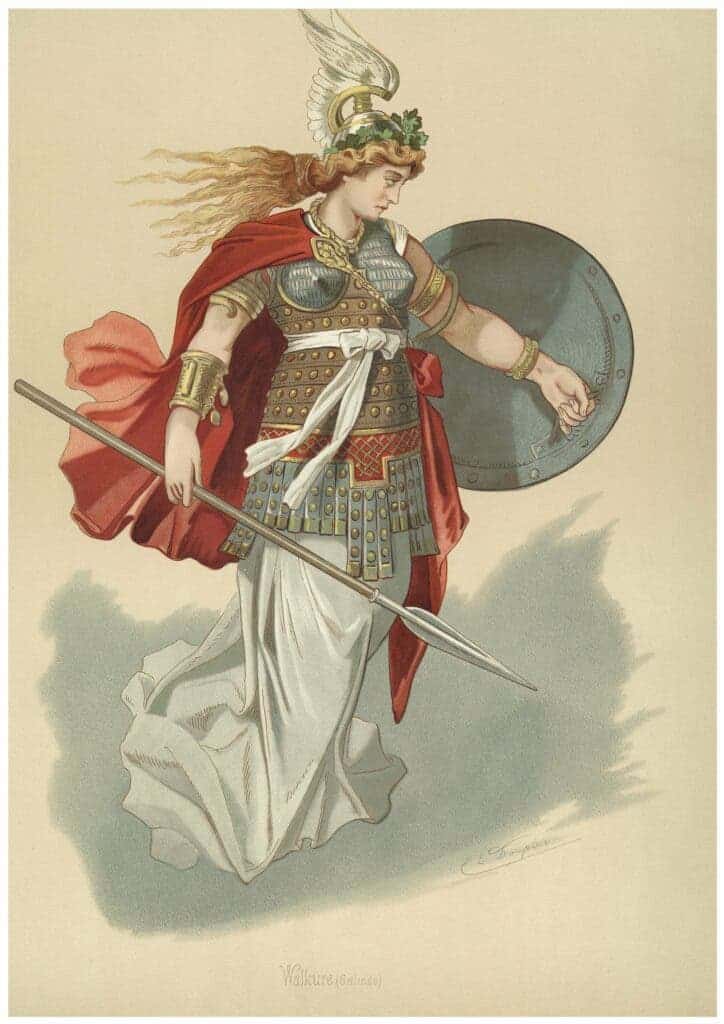
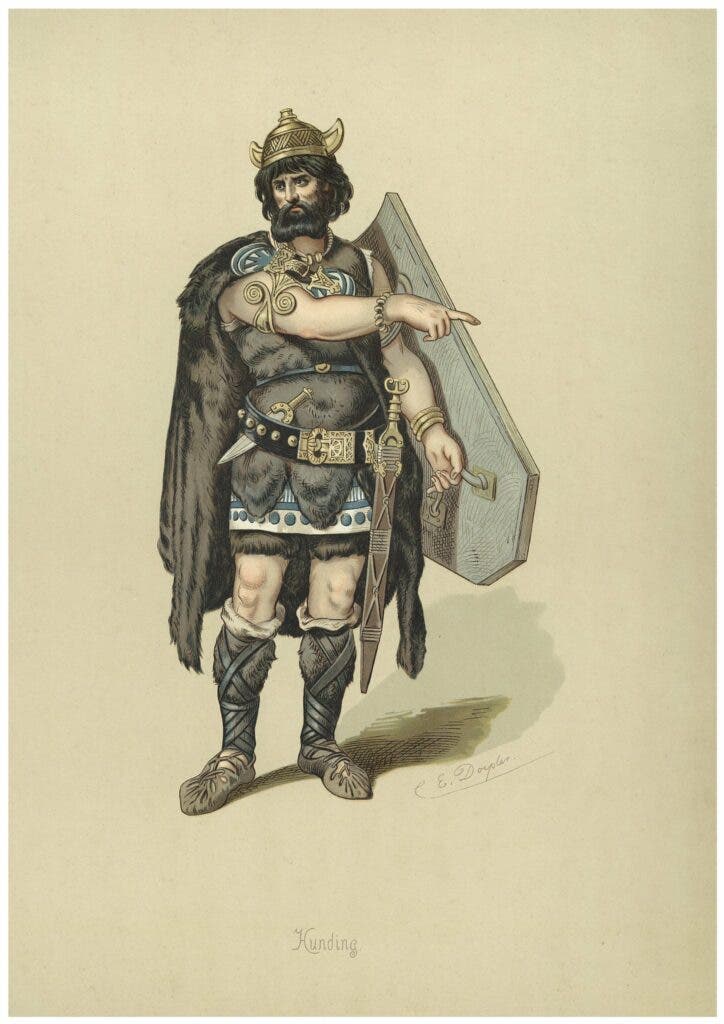
As expected, Wagner’s opera proved an instant hit and it was soon imported by production companies across the world. And as the opera’s influence grew, so did the myth of the Vikings wearing cow-like horned helmets. It’s not clear why Doepler chose this artistic depiction. Perhaps he was influenced by ancient Greek and Roman historians who reported northern European tribesmen wore helmets adorned with all sorts of ornaments, including antlers, feathers, and horns.
Nevertheless, the imagery of horned Viking helmets stuck and was subsequently amplified in the decades that followed the death of Wagner and Doepler. For instance, in 1960, the professional football team based in Minneapolis took the name Minnesota Vikings and adopted the profile of a blond Norseman with a helmet with horns as its logo. Around the same time, Marvel Comics introduced a new fictional comic book superhero called Thor, based on the Asgardian god of thunder, depicted as a giant carrying his mighty hammer Mjolnir, with a winged helmet on his head. The myth of the horned Viking helmets is so prevalent nowadays that even Swedes, Danes, and Norwegians wear these helmets when they dress up for an event or attend a major sporting event to support their Scandinavian teams.
What did Vikings actually wear?
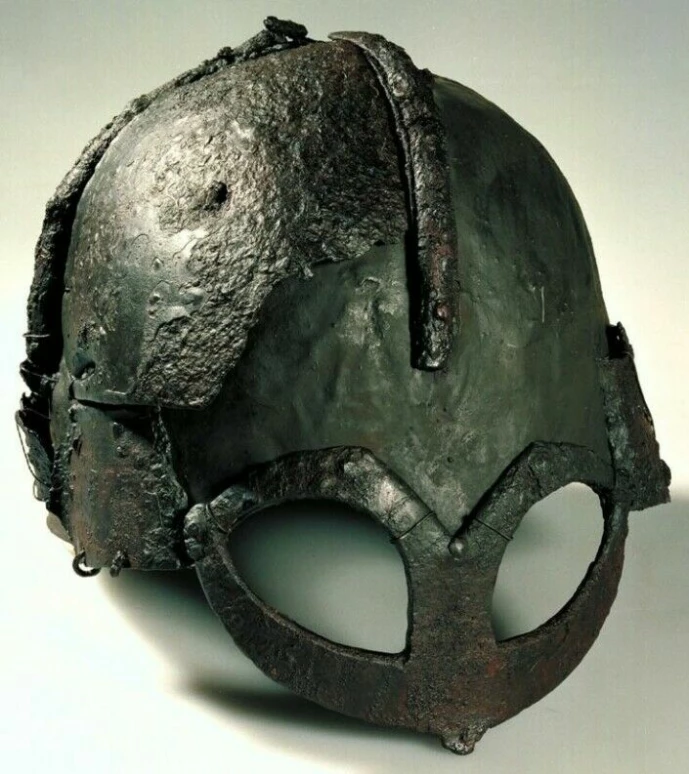
Vikings originated in what is now Denmark, Norway, and Sweden. These were seafaring warriors that left their homelands in vast numbers and began raiding coastal cities between the 8th and the 11th century. The British Isles, and especially undefended monasteries, were targeted. These raids proved wildly successful and the Vikings became extremely powerful, controlling many vast regions in Britain, Ireland, France, and Germany, and colonizing Iceland and Greenland. The so-called Viking Age ended in the mid-1000s when all of Scandinavia converted to Christianity and Viking culture became absorbed by the larger Christian Europe.
The Vikings were formidable seamen and warriors, which explains their success. The common Viking fought with a spear and shield, while the nobles and bravest warriors also wore armor and helmets. But although archaeologists have found numerous Viking-era clothing, axes, arrows, and all manner of weapons, only a single preserved helmet has been found — the Gjermundbu helmet from Norway.
The Gjermundbu helmet, alongside a sword and chain mail, was found in a mound at a farm in 1943. Although it is the only Viking-era helmet ever found, it’s very well preserved giving us a hint of what Viking warriors truly wore, although this particular gear was probably owned by a chieftain or some other high-status individual judging by its fine craftsmanship. The helmet had a metal frame around the eyes, like glasses, and plates at the back that protected the warrior’s neck. The inside of the helmet would have been lined with wool or leather to soften blows, like the styrofoam lining in a bicycle helmet. This is a much more practical design for a warrior, unlike horned helmets that would easily tangle in battle and cause more harm than good.
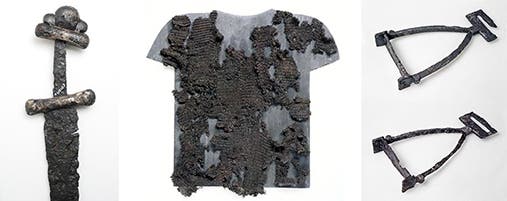
The real horned helmets from Scandinavia

Horned helmets really did exist in Scandinavia, it’s just that they predate the Vikings by almost 2,000 years. The extraordinary Bronze Age Viksø helmets were found in a bog on the island of Zealand in 1942 and archaeologists think they were rather common in Scandinavia between 3,700 and 2,500 years ago. There are also petroglyphs from the Bronze Age in western Sweden and southern Norway, in which such horns often appear on the heads of human figures carved into stone.
The two helmets are currently housed at the National Museum of Denmark. Besides the horns, the helmets feature decorations, such as the beak and eye of a bird of prey, and had fittings that look like they were intended to attach feathers or even a mane of horse hair.
“There are many indications that these were not helmets made for combat either,” Ingrid Ystgaard, a Norwegian archaeologist, told Science Norway. “What they were used for at the time is just speculation. But one suggestion is that they were part of ritual retellings of ancient myths.”
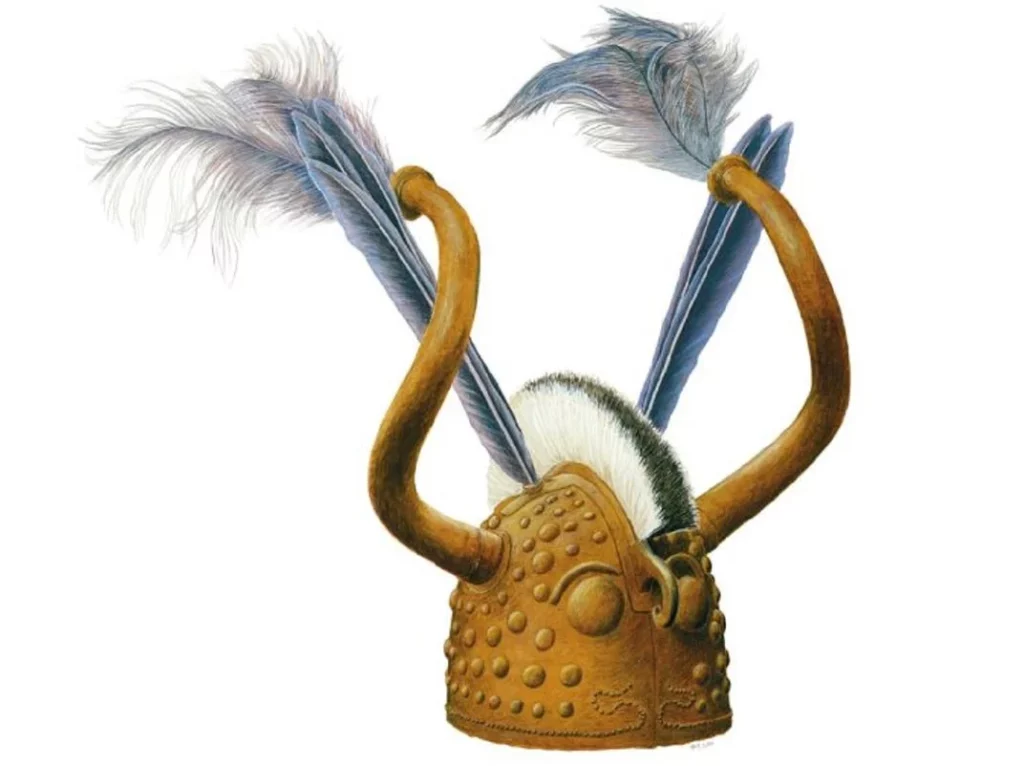
Although people have associated the Viksø helmets with Vikings, that is nonsense. Not only are these horned helmets from the Bronze Age, and nothing like them has been found in the Nordic countries since the time of the Romans, the horned theme is actually an ancient Near East and Mediterranean motif.
In fact, scientists believe that these horned helmets represent convincing evidence that ancient Scandinavian people had sophisticated trade networks with southern Europe, and this exchange likely involved sailing along the Atlantic coast rather than trekking across the Alps. These cultural exchanges were secondary to the much more important trade in materials such as copper and tin, which are used to make bronze and cannot be found in Scandinavia.
The bottom line is that the Vikings never wore horned helmets. They never went to the opera either, so there’s your hint right there.


